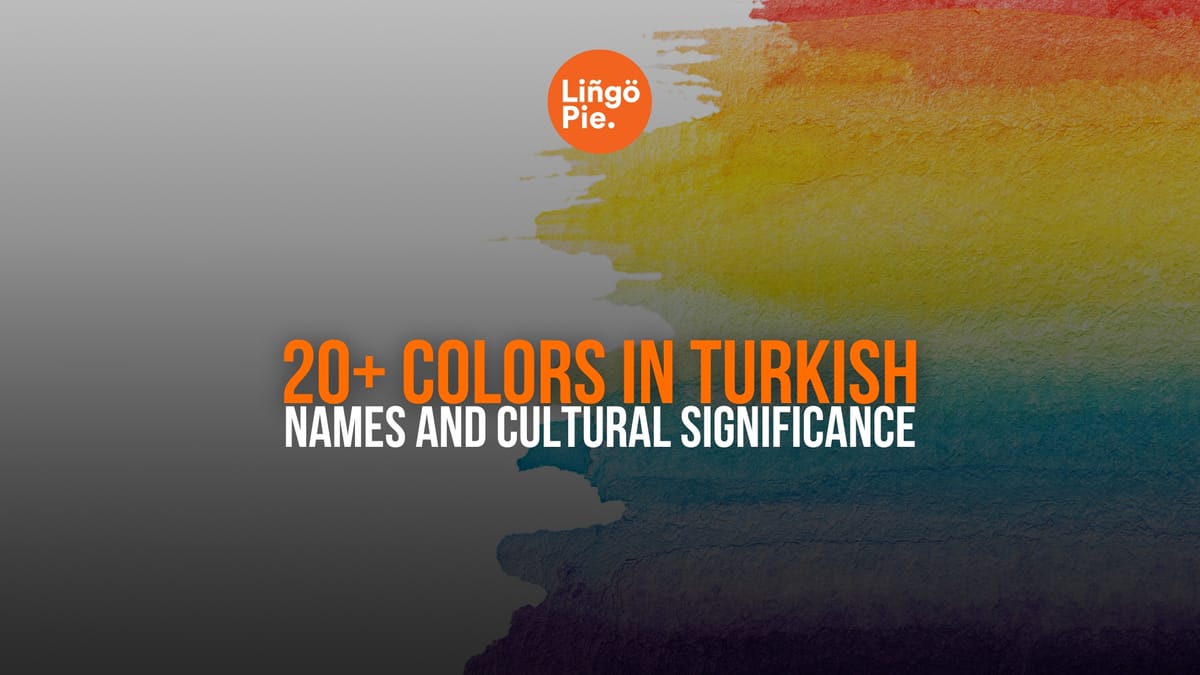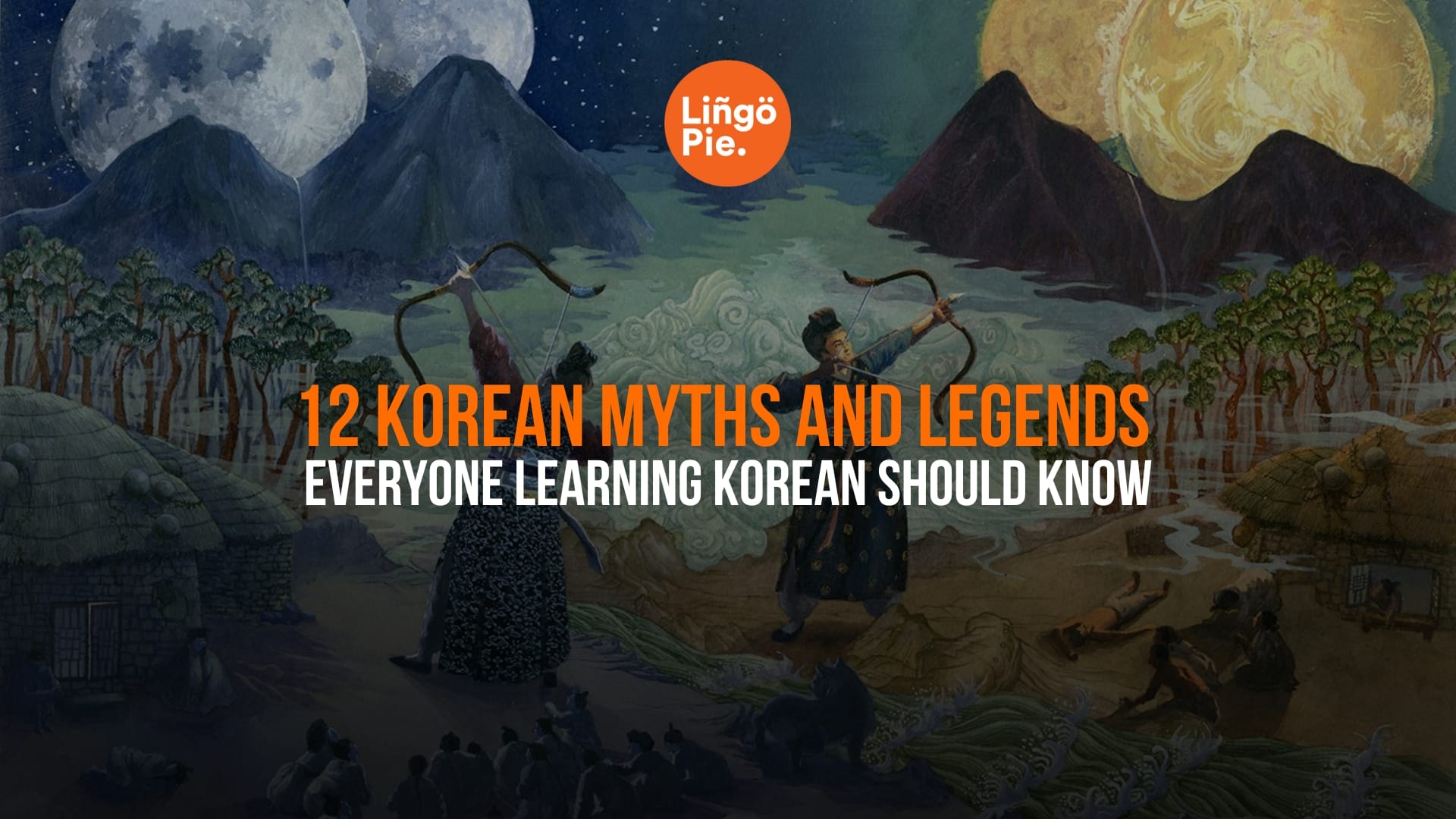Colors provide an essential window into the Turkish language and culture. Whether you're admiring the turquoise domes of Istanbul’s mosques, the vibrant red of the Turkish flag, or the kaleidoscope of hues in a traditional carpet, understanding Turkish colors enhances your language skills and cultural appreciation.
This guide will introduce you to over 20 Turkish colors, their cultural meanings, and how to use them in everyday speech. By the end, you’ll have added a colorful new dimension to your Turkish vocabulary.
- Hello In Turkish: 10+ Greetings Native Speakers Use
- How To Count Turkish Numbers As A Beginner
- 18 Sweet Turkish Terms Of Endearment You Should Use

Turkish Colors You Need to Know
In Turkish, the word for "color" is renk (pronounced similar to "rank" but with an 'e'). The plural form "colors" is renkler, formed by adding the suffix -ler.
Here are the most common Turkish colors, organized by category, with pronunciation guides in parentheses.
Basic Turkish Colors
- Kırmızı (kur-muh-zuh) – Red
- Mavi (mah-vee) – Blue
- Sarı (sah-ruh) – Yellow
- Yeşil (yeh-sheel) – Green
- Turuncu (too-roon-joo) – Orange
- Mor (more) – Purple
Neutrals In Turkish
- Siyah (see-yah) – Black
- Beyaz (bey-ahz) – White
- Gri (gree) – Gray
- Kahverengi (kah-veh-ren-gee) – Brown
Additional Turkish Colors You'll Encounter Frequently
- Pembe (pem-beh) – Pink
- Bej (bezh) – Beige
- Lacivert (lah-jee-vert) – Navy blue
- Turkuaz (toor-kwahz) – Turquoise
- Bordo (bor-doh) – Burgundy/maroon
- Eflatun (ef-lah-toon) – Lilac
- Altın (al-tun) – Gold
- Gümüş (gew-mewsh) – Silver
- Zeytin yeşili (zey-teen yeh-shee-lee) – Olive green
- Kestane (kes-tah-neh) – Chestnut
Turkish is a phonetic language where each letter is pronounced consistently, making it relatively straightforward to pronounce these color terms once you understand the basic sound rules.

How To Modify Colors in Turkish
Turkish has several patterns for modifying colors that allow for nuanced descriptions. Mastering these patterns will significantly enhance your ability to describe colors precisely.
Light And Dark Colors In Turkish
To indicate light or dark shades of colors, simply place these modifiers before the color:
- Açık (ah-chuk) – Light
- Koyu (koy-yoo) – Dark
Examples:
- Açık mavi – Light blue
- Koyu yeşil – Dark green
Note that in Turkish, unlike English, the modifier comes first, followed by the main color.
The "-ish" Colors In Turkish
Turkish has specific suffixes to express that something has the quality of a particular color (similar to "-ish" in English):
- The suffix -(i,ı)mtrak creates adjectives describing colors with an "-ish" quality
- The suffix -(i)msi serves a similar function
Examples:
- Yeşilimsi – Greenish
- Mavimtrak – Bluish
These suffixes follow Turkish vowel harmony rules, where the vowel in the suffix changes based on the vowel in the root word.
Intensified Colors In Turkish
Turkish employs a distinctive method of intensifying colors through reduplication, where the first syllable of the color is repeated with an added consonant:
- Masmavi – Very blue
- Sapsarı – Very yellow
- Yemyeşil – Very green
- Simsiyah – Very black
- Bembeyaz – Very white
- Kıpkırmızı – Very red
This pattern of reduplication creates emphatic forms that convey intensity and is a unique feature of Turkish that adds expressiveness to color descriptions.

Cultural Significance Of Colors In Turkish
Colors in Turkish culture carry deep symbolic meanings shaped by history, geography, and cultural values. Understanding these meanings provides insight into Turkish art, traditions, and social practices.
Red (Kırmızı/Al/Kızıl)
As the dominant color of the Turkish flag, red represents the blood of martyrs who sacrificed their lives for the homeland. This connection makes red a powerful symbol of Turkish nationalism and patriotism.
In traditional ceremonies, red symbolizes virginity and good fortune. Brides often wear red veils or sashes during their wedding day or henna night celebrations to invite prosperity into the marriage.
In ancient Turkish culture, red symbolized fire (od) and blood, representing excitement, bravery, force, and rationality—all highly valued qualities.
Blue (Mavi)
The word "turquoise" derives from the French word for "Turkish," as the mineral was historically traded through Turkey, creating a lasting association. More importantly, the locals view blue as symbolizing wisdom, skill, and strength in Turkish tradition.
Türk mavisi (Turkish blue) is considered part of Turkey's national identity, reflecting the beautiful blue waters surrounding the Turkish peninsula.
Green (Yeşil)
Green is considered a holy color in Turkey and is used with particular reverence in traditional designs. It represents spring, vitality, hope, and life, especially significant in a country with diverse geography.
White (Beyaz/Ak)
White symbolizes cleanliness, purity, holiness, and wisdom. Historically, "ak" (white) referred to the west. The Mediterranean Sea is called "Akdeniz" (the White Sea) and is located on Turkey's western coast. Today, the prevalent use of white in Turkish sports, arts, and architecture indicates its high cultural value.
Black (Siyah/Kara)
"Kara" is traditionally associated with the north. The Black Sea (Karadeniz) lies on Turkey's northern shores. In ancient Turkic inscriptions, "kara" described a "Black Nation," associating black with strength, largeness, and the common people.
While "siyah" generally describes the literal color black, "kara" is often used in figurative expressions and idioms.

The Color Story Behind Turkish Carpets and Textiles
Ever wondered why those Turkish carpets and textiles look so cool? It’s not just random design choices—it’s centuries of tradition and meaning packed into every color. When you look at a traditional Turkish carpet, you're actually "reading" a visual language:
- Red: Happiness, power, fate (Turks LOVE red)
- Orange: Humility, piety, loyalty (the spiritual color)
- Yellow: Sunshine, glory, power (the bright energy color)
- Green: Spring, vitality, hope, life (the sacred color, used thoughtfully)
- Blue: Wisdom, skill, strength (the intellectual color)
- Brown: Fertility (the earth color)
- White: Purity, peace (the clean slate)
- Black: Destruction (that's why it's used sparingly, mostly just as an accent)
How Turks Made These Amazing Colors (Before Synthetic Dyes)
This is the really cool part—all those vibrant colors in antique Turkish textiles came from plants and insects:
- Red: The famous Turkish red comes from madder root (growing in Central Anatolia and the Aegean region). That rich, saturated "blood red" you see in antique carpets? That's 15th-18th century madder root magic.
- Yellow: Yellow comes from Reseda Luteola (Dyer's Weld), which contains a dye molecule called luteolin that's incredibly resistant to fading from light or washing. That's why those centuries-old yellows still pop.
- Blue: Came from two plants: woad (local but weaker) and indigo (imported but stronger). The really vivid blues came after trade routes to India opened up, bringing better indigo.
- The Mix-and-Match Colors: Orange? That's red-dyed wool dipped in yellow dye. Green? Yellow-dyed wool dipped in blue dye. Turkish dye masters were basically ancient color chemists creating secondary colors through successive dye baths.

Colors In Contemporary Turkish Culture
Colors continue to play significant roles in modern Turkish society, particularly in sports, politics, and cultural identity.
Turkish Sports Teams and Their Colors
The color choices of Turkish sports teams reflect cultural values and historical associations:
- Major Istanbul Teams: The three prominent Istanbul soccer clubs have distinctive color identities:
- Galatasaray: Red and yellow, colors with deep historical significance
- Fenerbahçe: Yellow and navy blue, selected to represent jealousy felt toward the team (yellow) and nobility (blue)
- Beşiktaş: Black and white, earning them the nickname "Black Eagles"
- National Preferences: Research on Turkish soccer clubs shows distinct color preferences, with red-white (11.8%) and green-white (11.4%) being the most common combinations. The most frequently used single colors are white (25.8%), red (18.1%), and green (12.5%).
Color Symbolism in Politics and Society
Colors serve as important visual shorthand in Turkey's political landscape:
- Red and White: Strongly associated with Turkish nationalism, mirroring the national flag
- Red-Yellow Combination: Often connected to certain communist or leftist political movements
- Yellow-Red-Green Combination: Recognized as representing Kurdish identity and nationalism
- Light Blue: Sometimes associated with pan-Turkic identity that extends beyond Turkey's borders
These color associations are visual cues communicating political alignments and cultural identities within Turkish society.
- 8 Best Turkish Movies On Netflix For Learning Turkish
- 6+ Best Cartoons To Watch In Turkish To Learn The Language
- 5 Best Turkish Documentaries Every Traveler Should Watch
Using Colors In Turkish Sentences
In Turkish, colors typically follow the noun they describe when used as an adjective. When making a statement about color (like "The sky is blue"), the structure is generally [Subject] + [Color]. Unlike English, Turkish doesn't require a verb "to be" in simple present tense statements.
- 🦋 Gökyüzü mavi. (The sky is blue.)
- 🌞 Güneş sarı. (The sun is yellow.)
- 🍌 Muz sarı. (The banana is yellow.)
- 🌳 Ağaç yeşil. (The tree is green.)
- 🍏 Elma yeşil değil, kırmızı. (The apple is not green, it's red.)
- 🥕 Havuç turuncu. (The carrot is orange.)
- 🌅 Günbatımı turuncu. (The sunset is orange.)
- 🌸 Çiçek mor. (The flower is purple.)
- 🚺 Kız mor elbise giyiyor. (The girl is wearing a purple dress.)
- 🎀 Kurdele pembe. (The ribbon is pink.)
- 🌷 Pembe çiçekler çok güzel. (Pink flowers are very beautiful.)
- 🍫 Çikolata kahverengi. (The chocolate is brown.)
- 🌰 Ağaç kabuğu kahverengi. (The tree bark is brown.)
- 🌑 Gece siyah. (The night is black.)
- 🎩 Şapka siyah. (The hat is black.)
- ☁️ Bulutlar beyaz. (The clouds are white.)
- 🕊️ Kuğu beyaz. (The swan is white.)
Ready To Learn More Turkish?
Now that you've discovered the colorful world of Turkish, why not continue your language journey with Lingopie? Learning colors is just the beginning of what makes Turkish such a fascinating language to explore.
With Lingopie's extensive library of authentic Turkish content, you can see these colors in action while immersing yourself in Turkish culture through movies, TV shows, and music. Take your first step toward Turkish fluency today and discover how much more engaging language learning becomes when it's connected to real cultural context.











